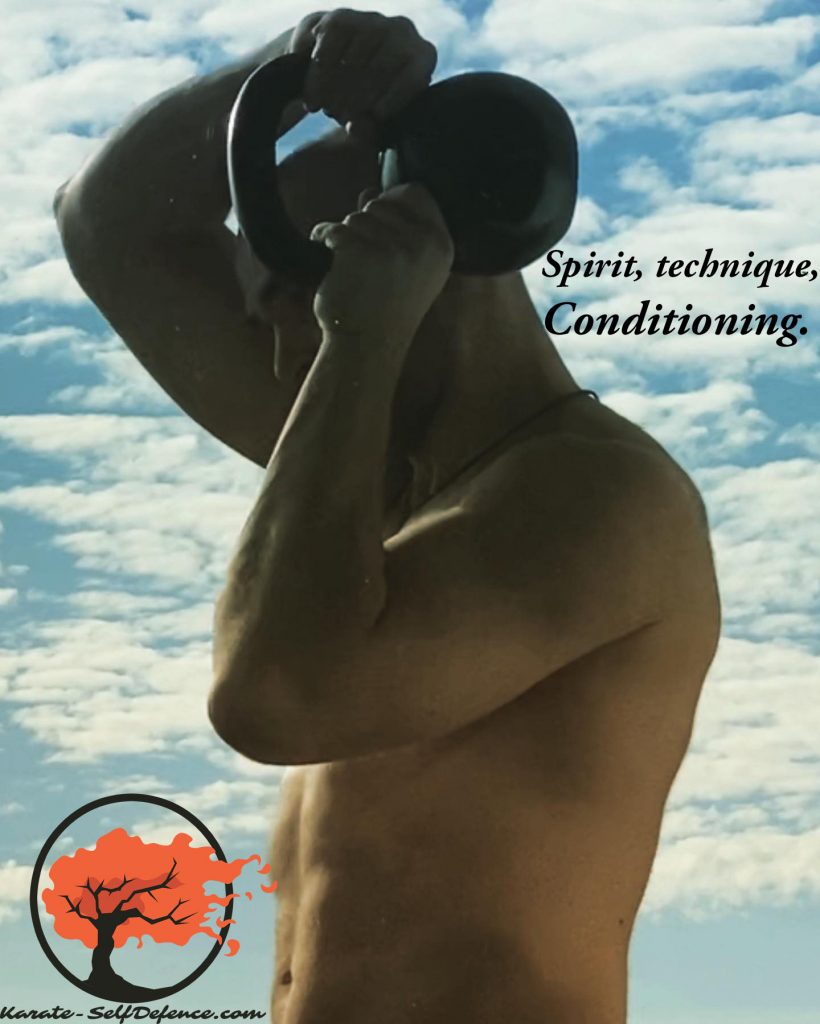
In regular karate classes today in the western world it is almost impossible to cover all the important aspects we need to move our karate to perfection. A training lasts mostly for 75 up to 90 minutes, most people go to their dojo two or three times a week. This is far away from the amount of efford and time, Morio Higaonna sensei (10th dan Okinawa Goju-Ryu), our world chief instructor Tetsuji Nakamura Sensei and all the other senior instructors put into their training to succeed and improve. While the training of kata should regularly be supported by your sensei and all kinds of irikumi and partner drills can only be trained with partners in the most effective way, the large topic of “conditioning” can be put into your focus when you are on your own. I often observe people doing some push ups here, some stone hitting there, but mostly without a plan. Also many ways of weight training, that can be seen in social media, don´t really support (´hojo´) your improvement in karate. In the following content I want to bring some awareness into this one pillar of the trinity “spirit – technique – CONDITIONING”.
The term “conditioning” contains a lot of aspects.Your mind and body are put into the right condition. In this article we well have a closer look into the many facets of the topic ´conditioning´ for Karate and self defence.
To harden oneself
One training aspect, Morio Higaonna sensei (10th dan Okinawa Goju-Ryu) calls “conditioning” is ude tanren. In this you are preparing your body for impact. Ude tanren leads to a higher bone density, thickens the wrapping of your muscel tissue and makes you (scientifically proven) more resistant against a higher load of pain. Watch Higaonna Sensei demonstrating ude tanren with a stone at the opening ceremony of shudokan dojo here. That makes you more robust when it comes to a fight and your psyche doesn´t get shattered as fast as it would do without. The risk of getting injured also declines in the ´conditioned´ parts of your body, so you can put your focus more on protecting your head in fighting scenarios. It is also a very good spirit training, the aspect of a remaining fighting spirit even under tremendous pain can be a result. Ude tanren can be performed with a partner – by hitting the palms, backfists, forearms (from each side), chest and abdominal muscles and the latissimus or by kicking the shinbones against each other, kicking the thighs, stomach, latissimus. When blocking techniques are performed in a strong way with a partner, this can already become an ude tanren exercise for both. If you perform it for yourself, nukite zukis into a bucket with sand, hitting the makiwara (watch here), hitting your body with a stick and hitting a stone with your palms, backfist, forearms etc. are effective ways to get your weapons strong. The aspects of technique (you are hitting and kicking) and spirit (see above) are also present in this way of conditioning.
Traditional hojo undo
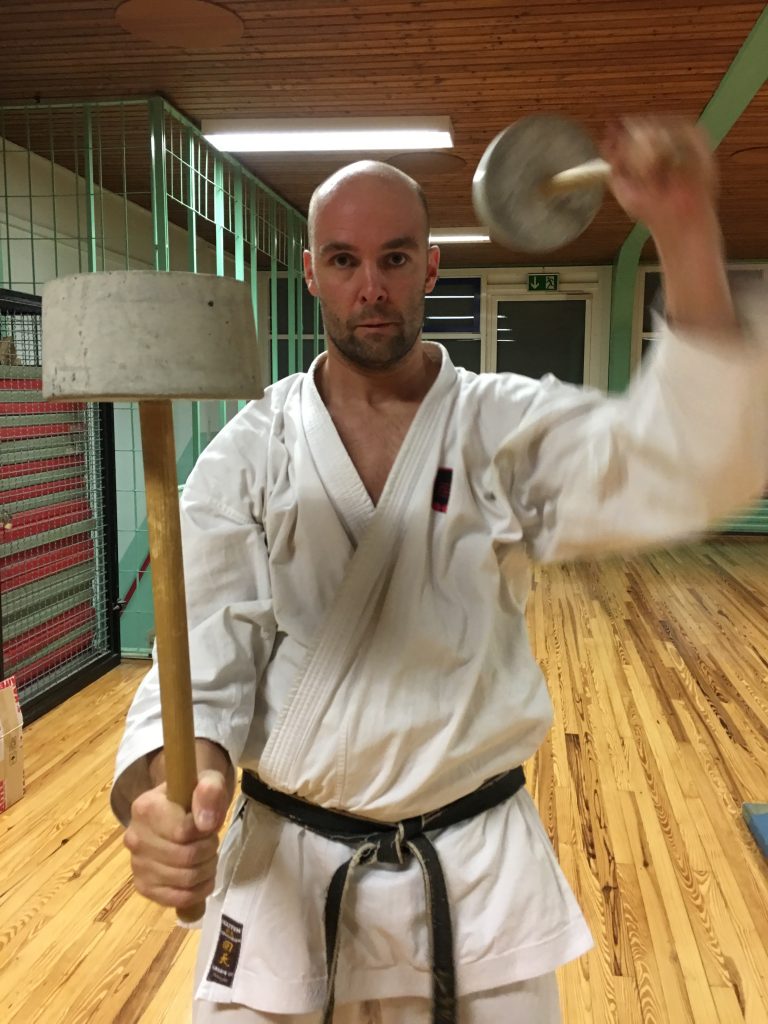
Traditional junbi undo and hojo undo are also ways of conditioning. They prepare your body for karate techniques in a way, that you use movement patterns, mechanics and muscle chains during you preparation (junbi undo) and functional strength training (hojo undo) in almost the same way like in the karate techniques themselves. The perhaps most important tool is the chi ishi, a construction of a mill stone and a fixed bat in the hole. Higaonna Sensei uses the chi ishi most frequently. The IOGKF world chief instructor Sensei Tetsuji Nakamura once told, that his first karate lessons under Aragaki Sensei (the last living student of Chojun Miyagi Sensei) were hojo undo teachings. If you use the hojo undo tools, you are much more likely able to perform proper karate techniques in a correct way. The former Navy Seal instructor Mike Gillette once said: “A man with weak hands is a weak man.”. The traditional hojo undo equipment supports in almost every exercise grip strength, for a good reason. If you can´t make a strong fist, if you can´t hold another person or hold something you want to carry – all of your upper body muscles are useless.
Main categories of pysical strength
When it comes to strength, there are three main categories:
1.) strength endurance,
2.) maximum strength and
3.) explosive strength.
For an allround warrior all of these are needed. When you can perform an exercise with just very few repetitions (pressing a certain weight, doing one arm pushups…) you are training your maximum strength. This could be needed for pushing somebody away, escaping a joint lock, dominating a (real) fight with an ippon and so on. When you can perform more repetitions, you make the exercise more difficult (weight vest, one arm push ups, one leg squats…). Strength endurance is trained, when you can perform 10 more more repetitions of a certain exercise. In this case you don´t go for heavier weights or more difficult exercises but just for more repititions or longer times (plank, standing in shiko dachi…). This allows you for example to keep your guard at the head for longer times and to through punshes for a longer period than hopefully your opponent does. Only do as many reps as you can hold a proper posture and execute proper movements. When your elbows move outwards and your hips hang through during push ups, take a break.
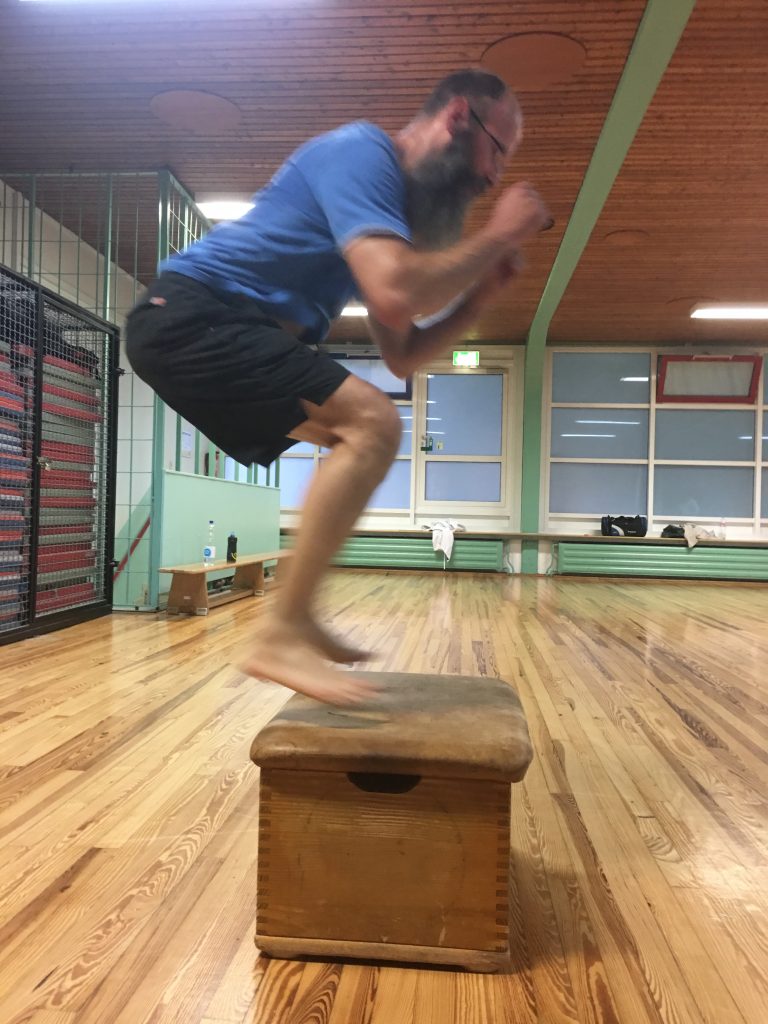
Explosive strength is trained with plyometric exercises. You perform push ups with hand claps, powerovers, jumps, through med balls and there are also many plyometric exercises in traditional hojo undo with chi ishi, kongoken etc. This keeps you not only fast but also powerful in the moment of impact. Pushups with handclaps and powerovers also support a strong and sharp kime (by instant core activation), which makes these exercises much more useful for karate than explosive bench pressing for example. Please watch Sensei Bakkies Laubscher (9. Dan IOGKF) explaining explosive push ups here. When you notice, that you get slower during your plyometric training session – stop! You don´t want to continue and drift into an endurance training at this point, as you are programming your nervous system only for explosiveness. Take a short break and then re-start. Many professional athletes also recommend to do one day only plyometrics and the other aspects of strength on other days as it should be more digestable and clear for your nervous system. You can do almost any exercise in an explosive way, I recommend that you short be able to perform at least 30 “endurance” repetitions of the exercise (for example push ups) as a solid foundation, before you start doing it plyometrical. Create volume first! If you want to spice it up with low budget and highly effective ideas, have a look at the methods from the boxer Enamait Ross, he inspired me strongly on my own conditioning program I do and his explosive core exercises for diagonal core strength are an awesome support for gjaku zuki, hook punshes etc.
Functionality
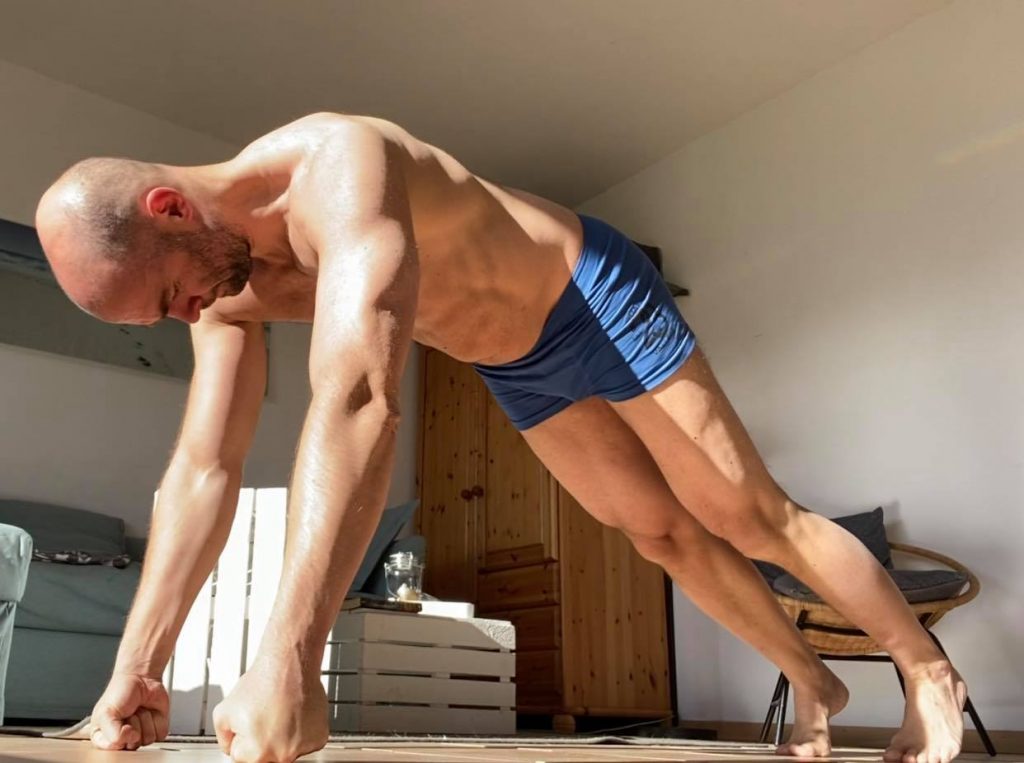
The most useful exercises include those muscle chains, that you need for your technique. A punsh, for example, is only as strong as it´s weakest link in the muscle chain. When your stance and legs are very strong and your arms also, but your core is too weak to support the technique, your body will re-absorb a part of your power. From this point of view, body weight exercises should have the first priority (especially those, in wich your diagonal core muscles are used, one arm push ups for example!), bench pressing etc. can be used as a supplement, when your arms are the weakest link, but try to avoid isolated muscle training as far as possible (I use it only when I have an injury to train around).
Performing push ups, always keep your tailbone in, core muscles tight, shoulders down and elbows closed – otherwhise you miss the biggest benefits of your training and maybe even injure your joints (wide push ups are killing your shoulders in a long term!). Click here for some intructional videos.
Balance the sides
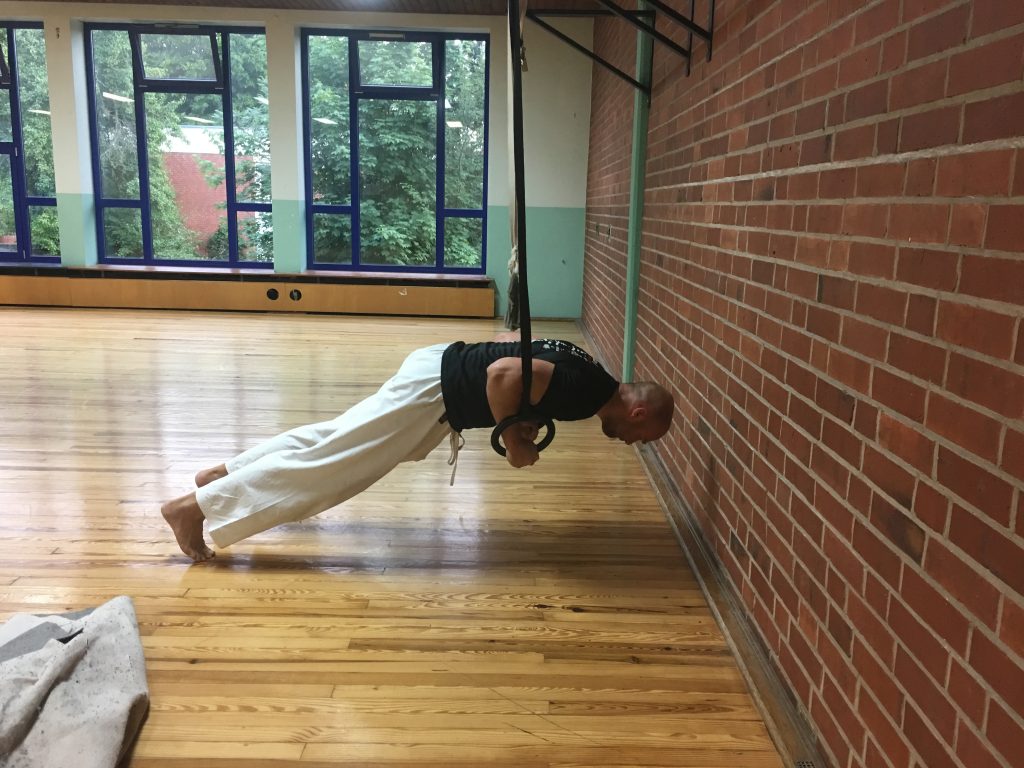
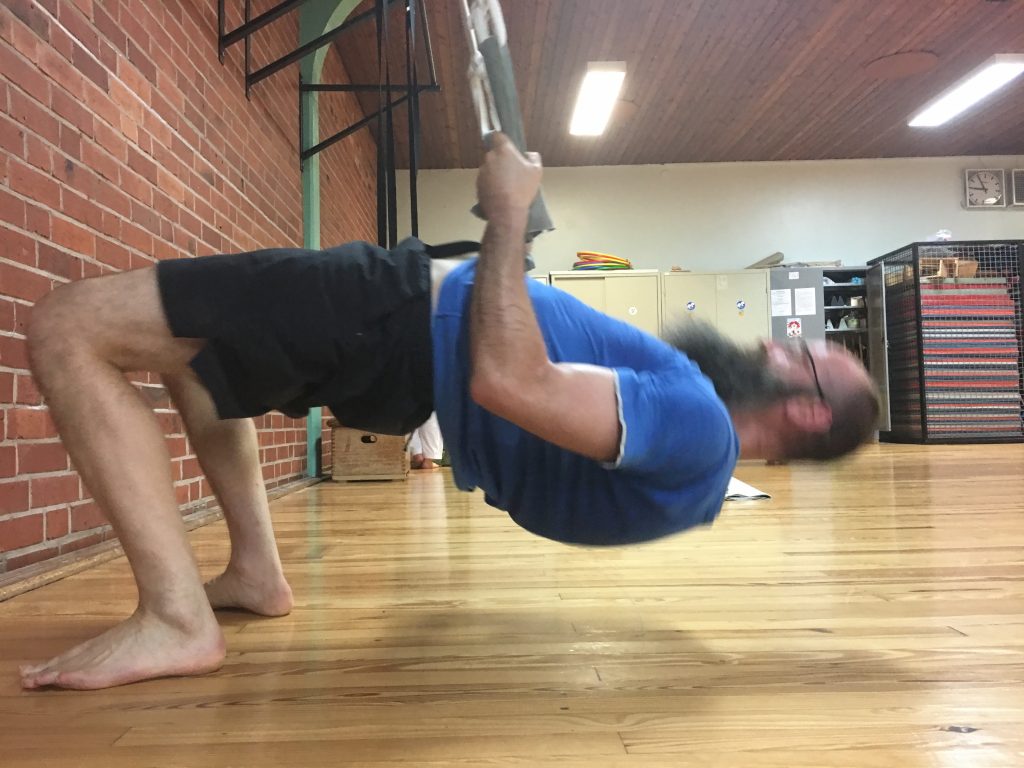
Take care that you do leg swings into all directions and also compensate your pulling and pushing for preventing muscular disbalances, that can cause long term injuries and a bad, unhealthy posture.
Workload
Another aspect of “conditioning” is your body´s capacity of workload. Working out is always perceived by your body as “stress”, your sympathicus/parasympathicus nervous systems are involved here as also stress-hormones are released: primarily adrenaline and cortisole.
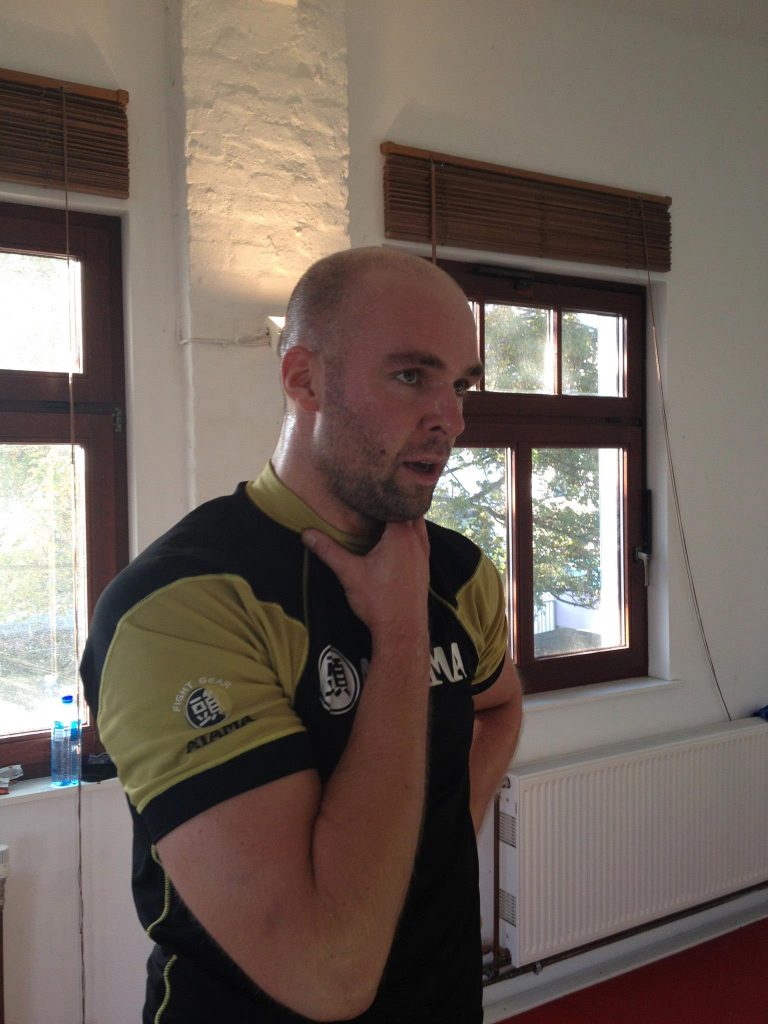
When you recover, the amount of these stress hormones gets lower and the amount of other hormones rises, one important hormone for women (yes you read it right) and men is testosterone. This appears in men and women in a natural balanced way and support your recovery and muscular growth. Without recovery, your body gets never rid of the stress-hormones, which can in terms of adrenaline lead to cardio-vascular deseases (heart attack) and in terms of cortisole to some kinds of cancer. A proper recovery in between hard training days is also important for your health, this icludes enough sleep and supportive nutrition!
Stay flexible
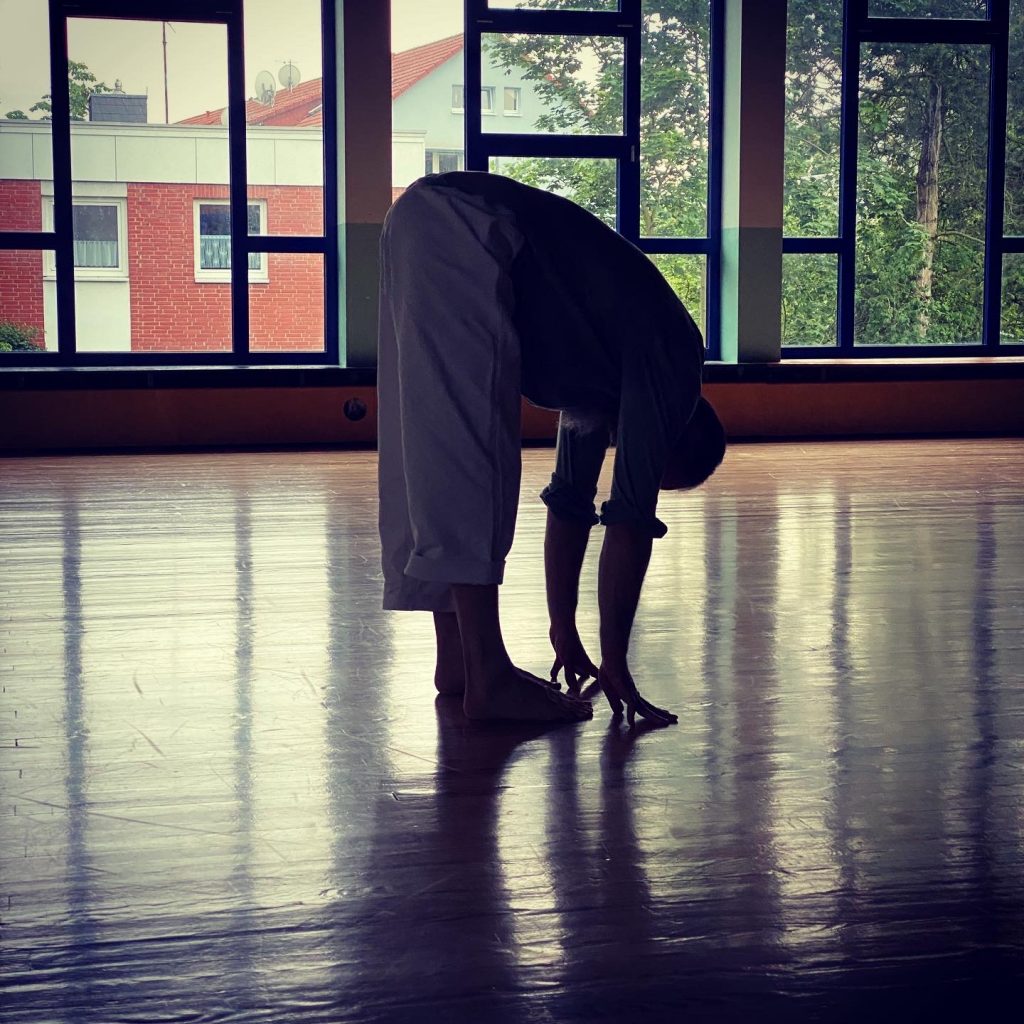
Use recovery days for your mobility, so your joints get more space, your fascia don´t fix you in workout related (stress related) postures and you can improve your technique and functional strength by using more joints in a proper way. Dynamic stretching (leg swings etc.) and static stretching (bending to your straight legs…) should happen a couple of times during the week, joint mobility sessions should be performed on a daily basis for at least 15 minutes. Your joint cartilege is not aided be the blood flow, so you should take care to keep the whole range of motion of every single joint in your body, as the cartilege gets its nutrients by compression and decompression. Not using a joint can make it stiff and can also make the cartilege starving out. Please read this article for more insights about individual variations of your own joints and how to adapt to this in your training (to prevent injuries!).
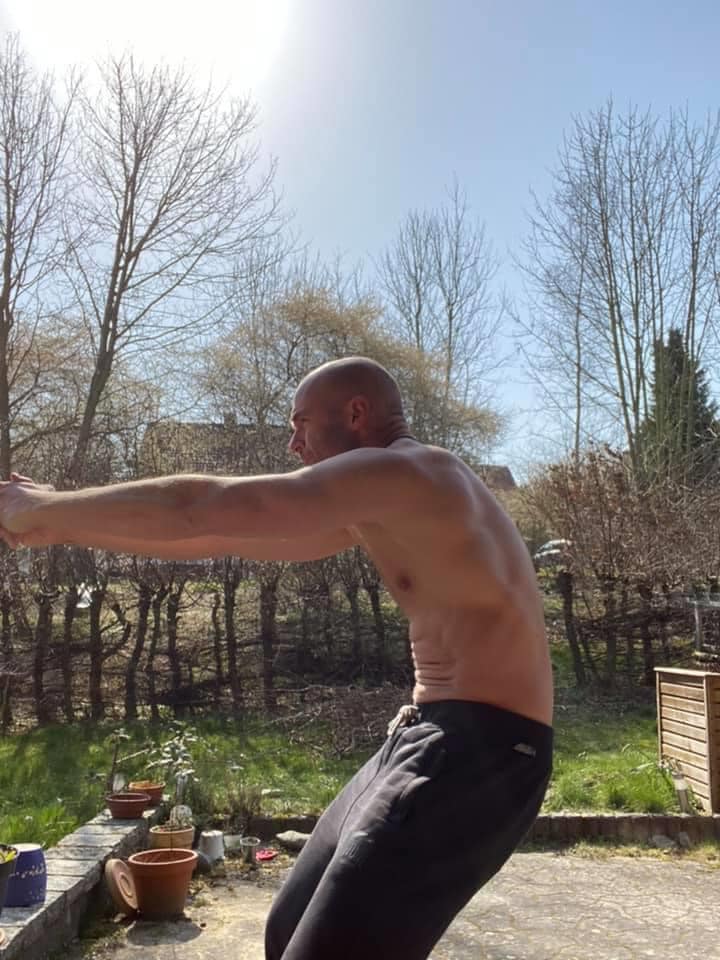
During the follow-along-workouts in my video-course, there are small recovery-periods, when you have a a short break between exercises and can apply my demonstrated breathing techniques to ground yourself and come back to your center. Your body can even learn to lower your stress-level in these short periods. That is also a very important aspect when it comes to self defence. Your goal should always be to have a clear state of mind (or let´s say: as clear as possible in that situation) even when the physical and psychological pressure is high and your body is full of adrenalin and cortisol. Working out properly and smart helps you to build up stamina, strength and willpower/fightingspirit as well as mental clarity for extended periods. It is a very important aspect, wich must not be skipped. When you combine your technique training with high intensity workouts, you practice your techniques in a state of mind, that comes close to real life danger situations. Learn proper techniques without tunnel vision and without a high load of stress and apply them later in those intense training settings – this prepares you in the best way!
Between your training sessions

The aspect of spirit training in conditioning can even be extended, when we put our focus on mindfulness in this context. This doesn´t only mean to be mindful with our body and health when we are injured, sick or overtrained, it also includes mindful eating and beeing mindful with your sleeping time and time managment. For enjoying this one life we have (and want to keep with self defence), it is important to find a balance of pleasure and functional food. In the training plans of this course I suggest some focal points for your training week. It´s your decision how far you can or want to get. I personally take it as a guideline. When I am invited somewhere as a guest, when the family comes together and in several other situations I make exceptions or try to combine it.
I hope this summary gives you an overview, how you can prepare your body for any karate style and finally for self defence. On my free content page you can find some nice exercises, that could inspire you in the topic ´conditioning´. Please remember, this text doesn´t cover ´technique´ and ´spirit´ fully, as they are just partially included into this topic. I am looking forward to read from you, please leave a comment and share it with your fellow karate practitioners.
Domo arigato gozaimasu!
